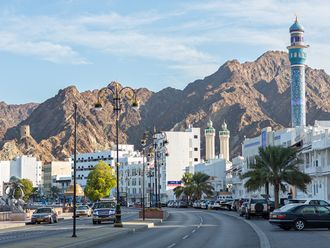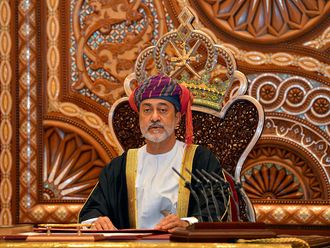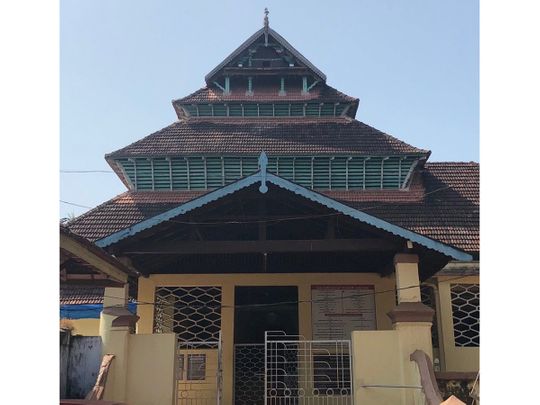
Bengaluru: It was a Friday and the blazing Malabar sun had just started to slide back from its peak. The narrow lanes of Kuttichira, a heritage quarter in Kozhikode, were resonating with the sounds of Azan. It was time for the weekly congregation and the faithful, draped in spotless white lungis and shirts, were rushing to the mosques that their ancestors built almost a millennium back.
Among of the oldest places of worship in this mercantile settlement is the Mishkal Mosque, unique in its architecture, heritage and presence.
It is also among the most famed monuments in the city of Kozhikode, though the city has much older places of worship.
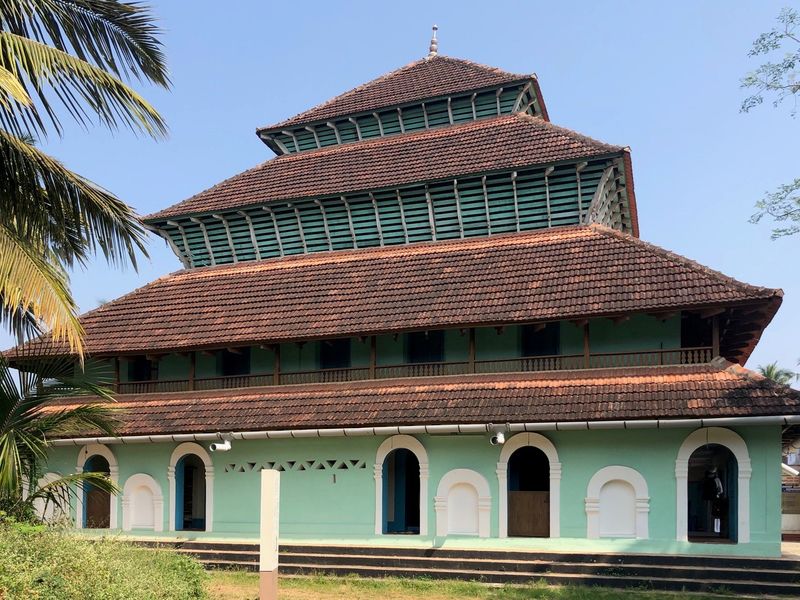
Alighting from the auto-rickshaw (three-wheeler) some distance from the mosque, I rushed behind the worshippers, my eyes eager to feast on this much spoken about beauty.
The moment I came in the presence of this turquoise treasure, I stopped on my tracks, my mouth almost gaping, my eyes stuck and mind dizzy. The feeling was something that can hardly be expressed in words.
It’s not just the stone and wood structure I am referring to here or the innumerable arched doors and the adjoining niches. Neither am I referring to the the sloping, cascading, tiered roofs and the exquisitely carved crowning gable.

It’s the delicate, miracle-like appearance of the structure, seemingly just moved from the gallery of a heritage museum, that held me in awe and I am still spellbound!
Inside, the mosque is simple, yet serene. Built with generous volumes of wood, as was customary for the Kerala architecture of the time, the ceilings and the upper walls exude warmth. The mimbar (pulpit) is entirely made of wood and has some fine carvings.
The top most floor is completely timber, with the original 700-year-old planks and rafters still intact, though much weakened by the ravages of time. It is usually cordoned off from regular worshippers and is only accessed upon special request. I was fortunate enough to visit the top, gingerly walking on the worn, blackened boards.
The mosque has seen some repair work recently, with some of its 24 wooden pillars replaced. The renovators have tried their best to maintain originality. But, as with all art, restoration will always be a close imitation. For the old, fragile structures such as this, we will have to make do with close imitations.
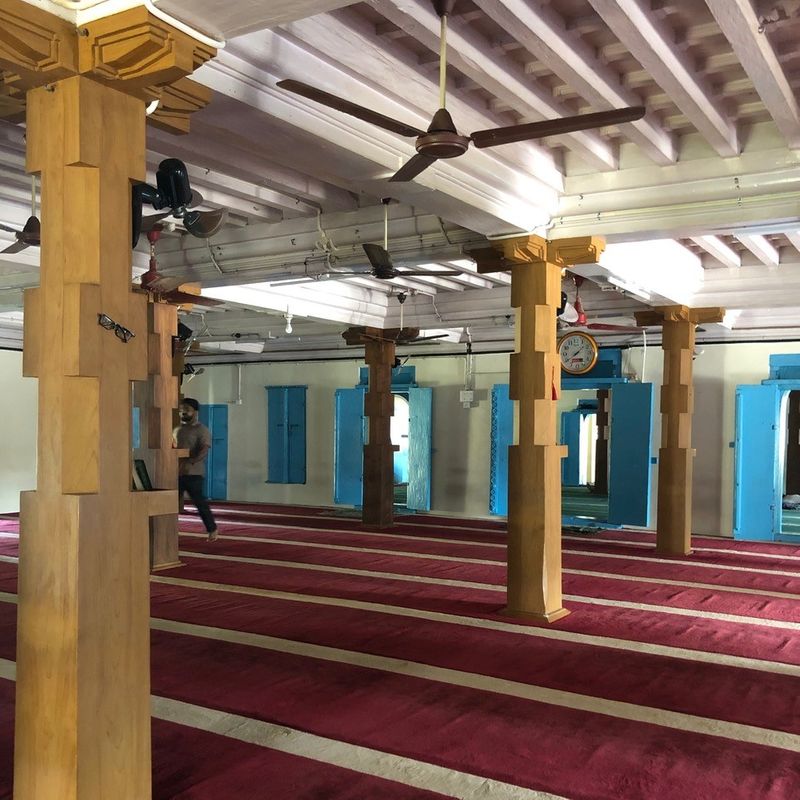
Unlikely mosque
With no domes or minarets and no mihrab (the niche on the front wall pointing to towards Makkah) visible from the outside, the mosque has hardly anything that one would associate with the traditional mosque architecture.
Yet, it is as much a mosque as any in the world and among the oldest standing in its original shape and structure.
A prime example of harmony between native and Islamic elements, the mosque is known for its fabled heritage.
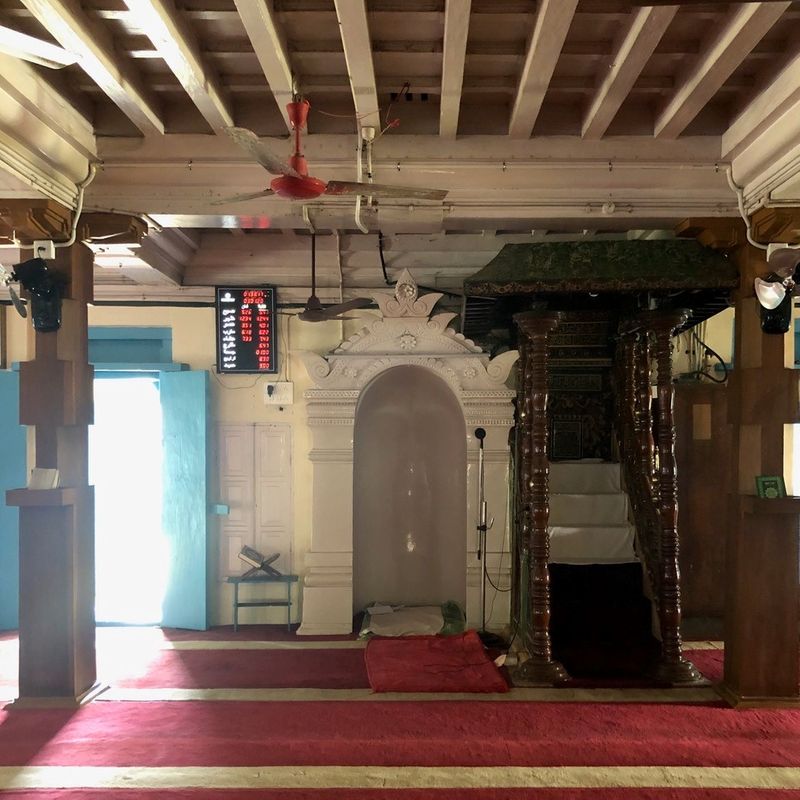
Though, envisioned and funded by the 14th century Yemeni merchant Nakhuda Mishkal, for whom Calicut was as much a home as Hadarmout, the hands that shaped the mosque were those of skilled thachchans (craftsmen) trained to build temples. What they built was a temple of love and harmony.
The craftsmen not only used their unique temple building skills in shaping this mosque, they also used the ancient Indian Vastu science to make the edifice a true symbol of co-existence.
Built on harmony, the goodwill that exuded from the mosque was on ample display when the local maharaja, the Zomorin of the time, defended and restored it, after the mosque was attacked and damaged by the Portuguese in 1510.
The Chief Qadhis (Magistrates) of Calicut who for centuries have presided over from the Mishkal Mosque, were always important members of the Zomorin’s court.
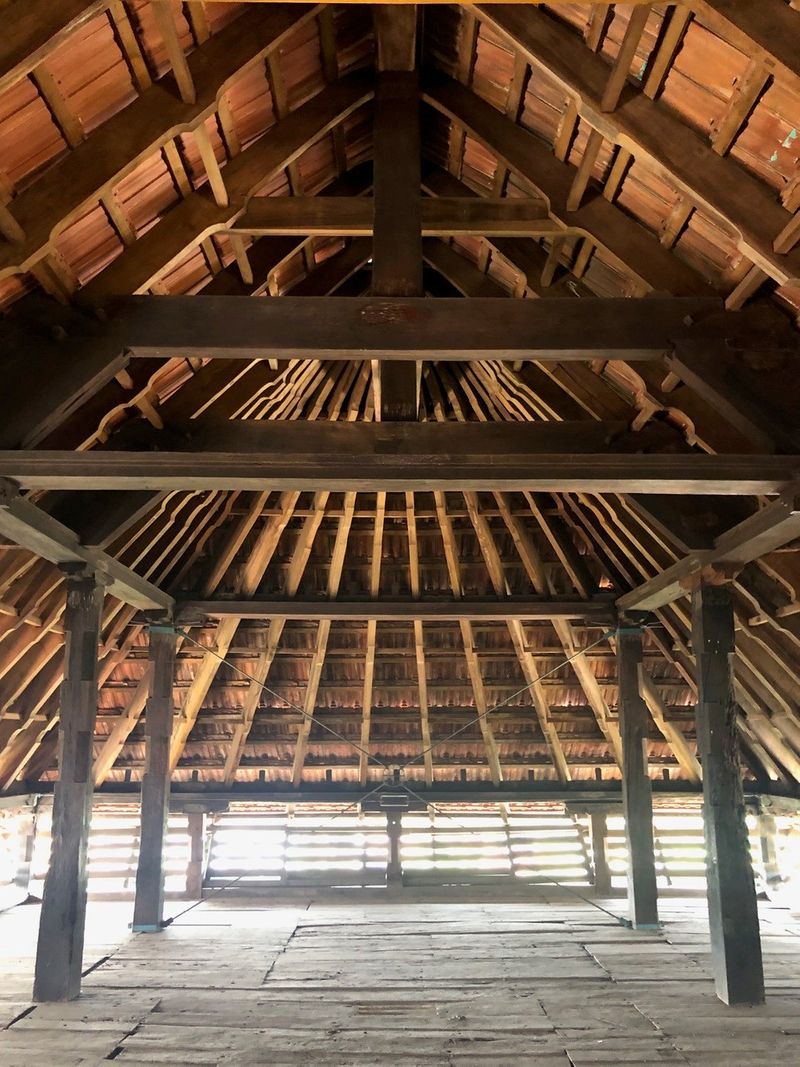
The composite heritage doesn’t end here. The Koya community that has lived in Kuttichira for more than a millennium, traces its ancestry to the marital unions of foreign merchants (mostly from MENA region) with the local women, from a time when Calicut was the biggest port in India and people from all over the world sailed to this cosmopolitan city for trade and commerce.
The Koya Muslim community has always had a strong relationship with the Zomorins, commanding the kingdom’s powerful navy as well as managing the commercial vessels of the maharajas and local merchants.
Despite the Arab influence, the community has maintained some unique native customs such as matrilineal family structure and matrilocal marriage, where the bride continues to stay with her parents after the wedding and the bridegroom visits her every night at her residence. Eventually, the groom becomes an intrinsic part of the bride’s family and in many cases lives with the in-laws permanently, inheriting to and from them.
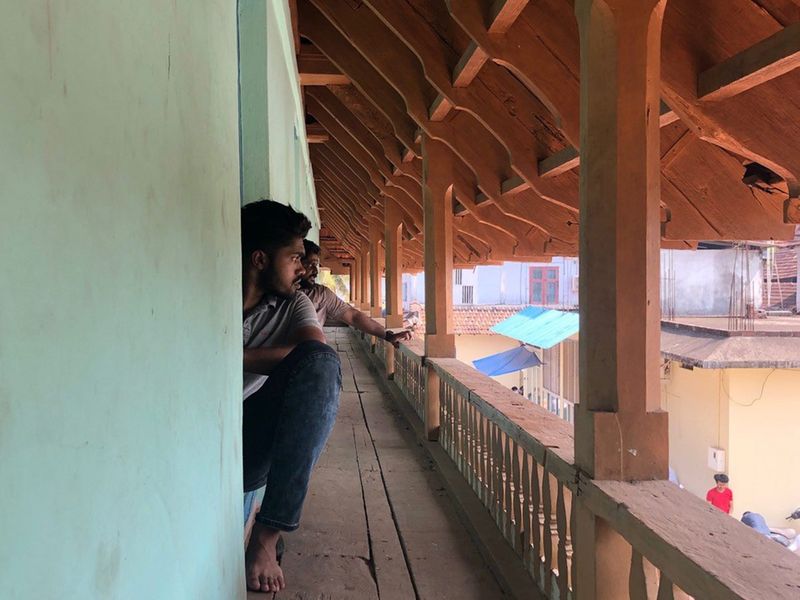
The history of the mosque and the community that lives around it, offers great lessons in cultural harmony and synthesis that were characteristic of Medieval India and continue to be the hallmark of this south Indian city and state.
The rest of India has some important lessons to draw from this epitome of coexistence, especially now when this unity in diversity is under growing strain of fragmentation!
Shafaat Shahbandari is a Bengaluru-based independent journalist. He is the founder of Thousand Shades of India, an alternative media platform that celebrates the diversity of India







